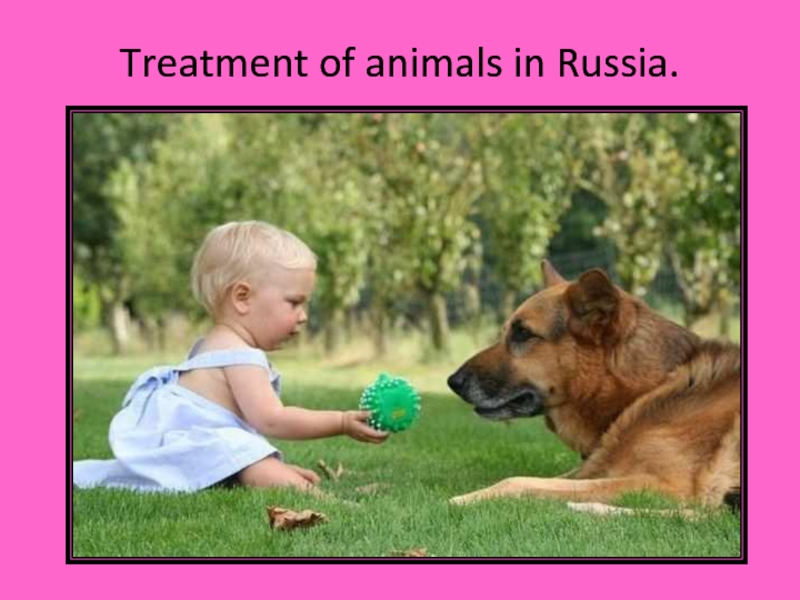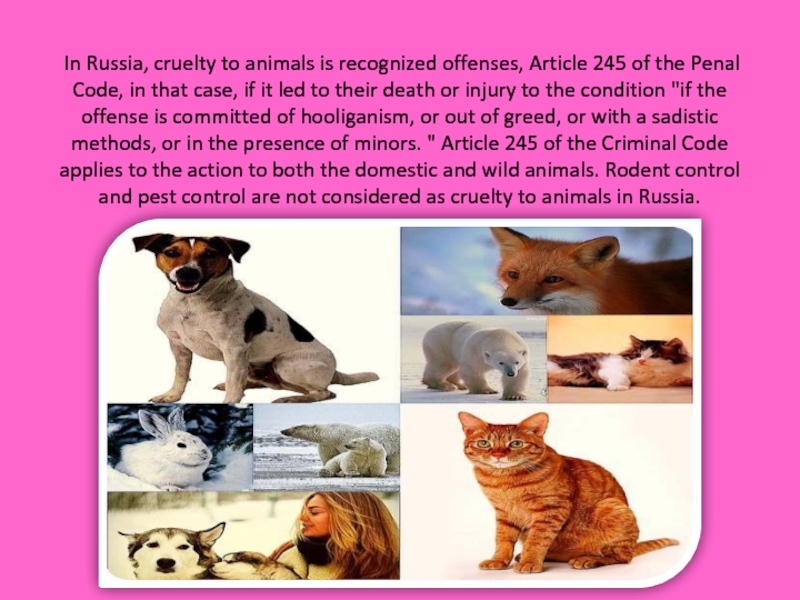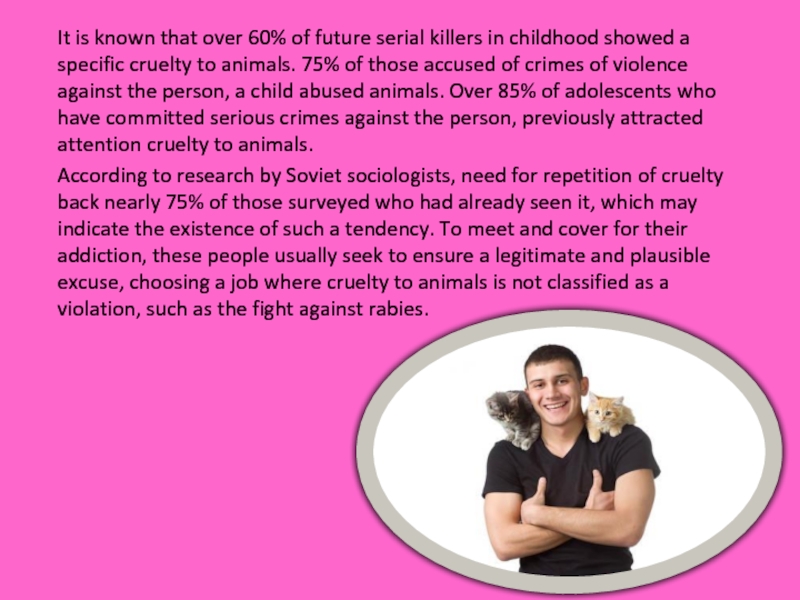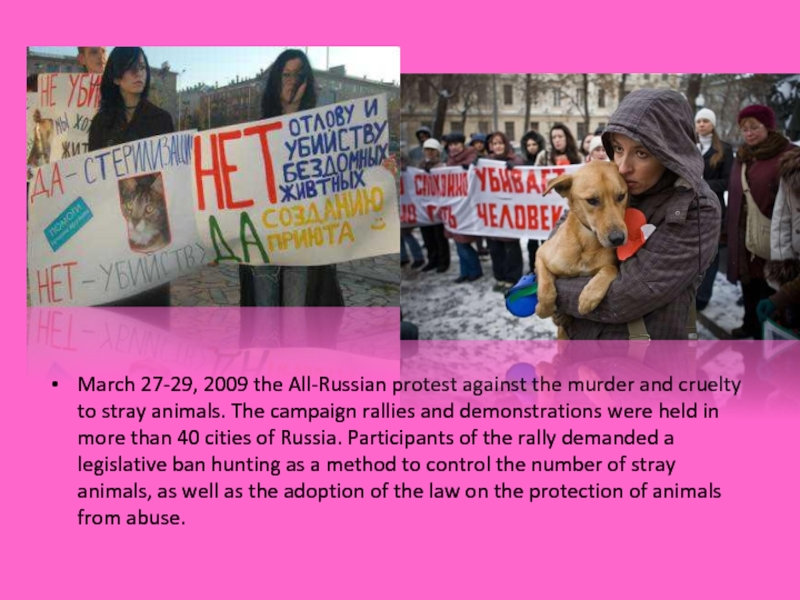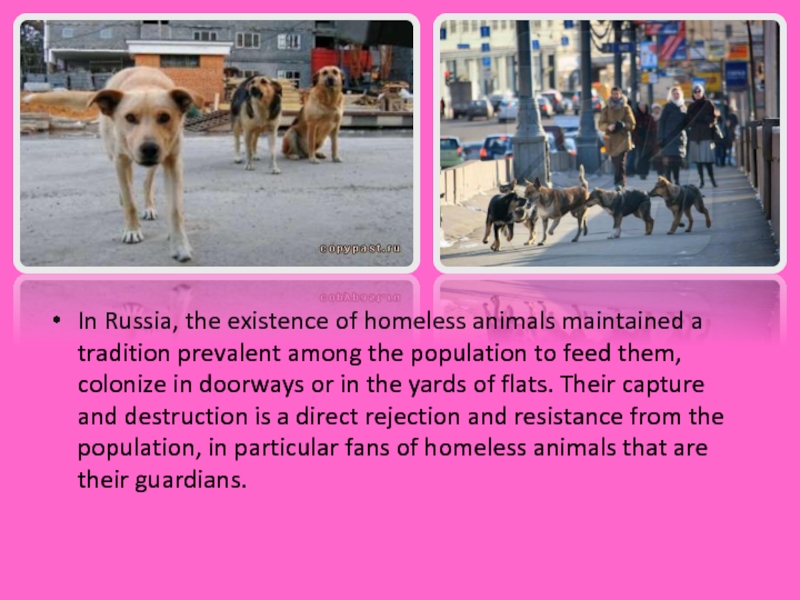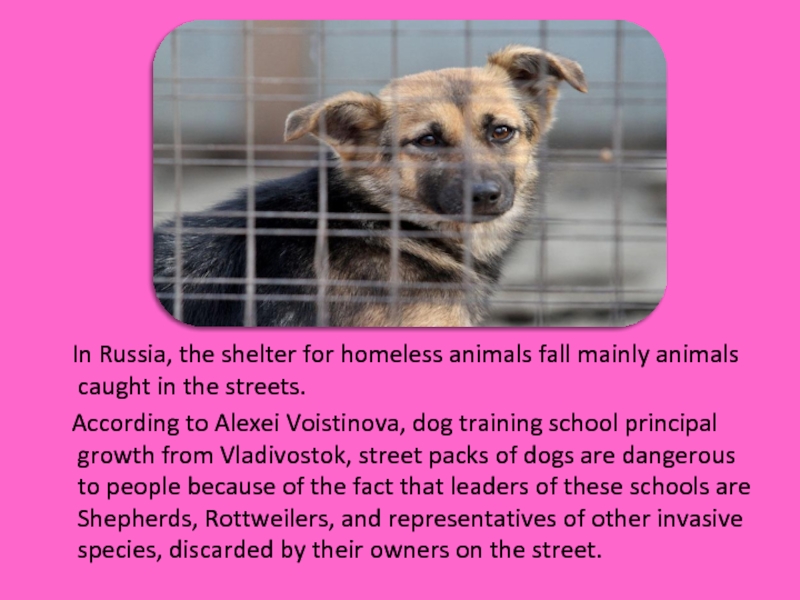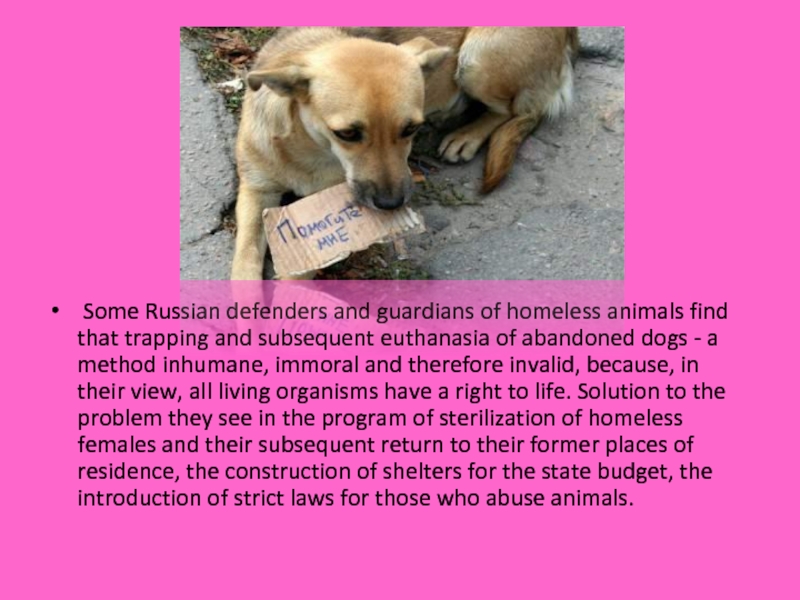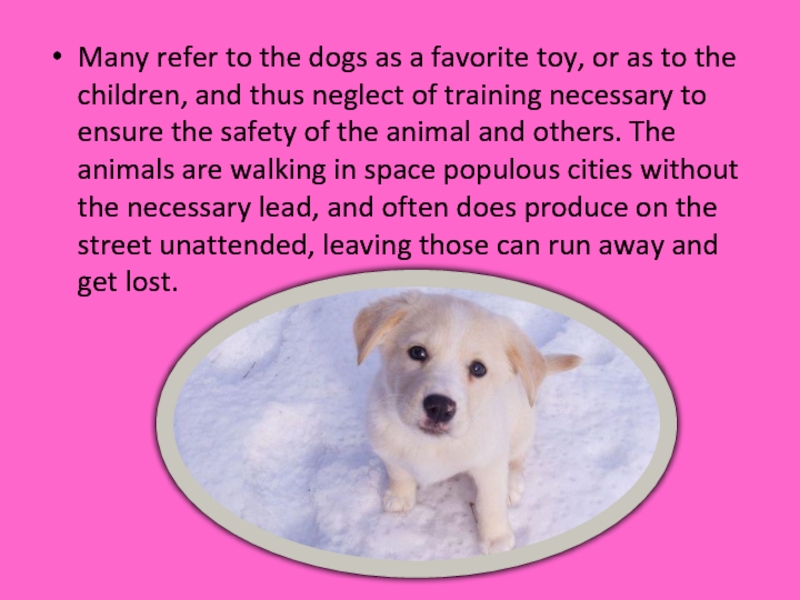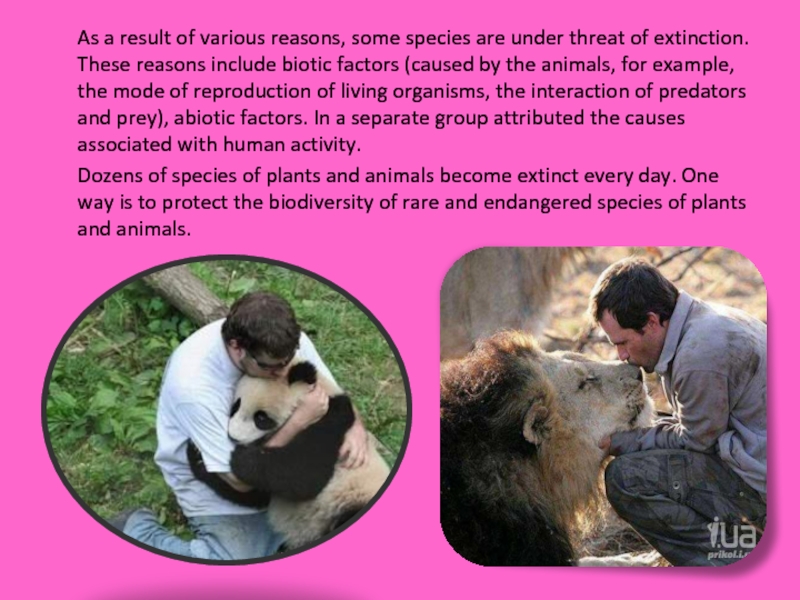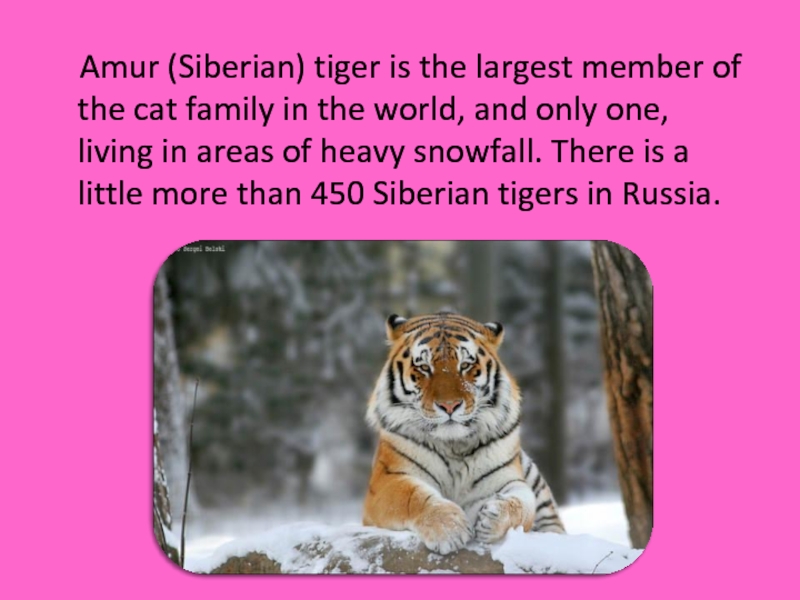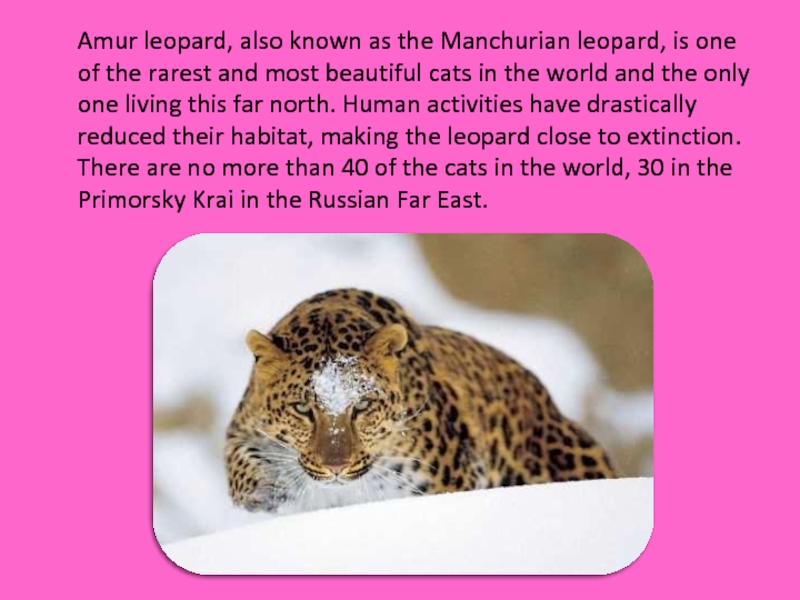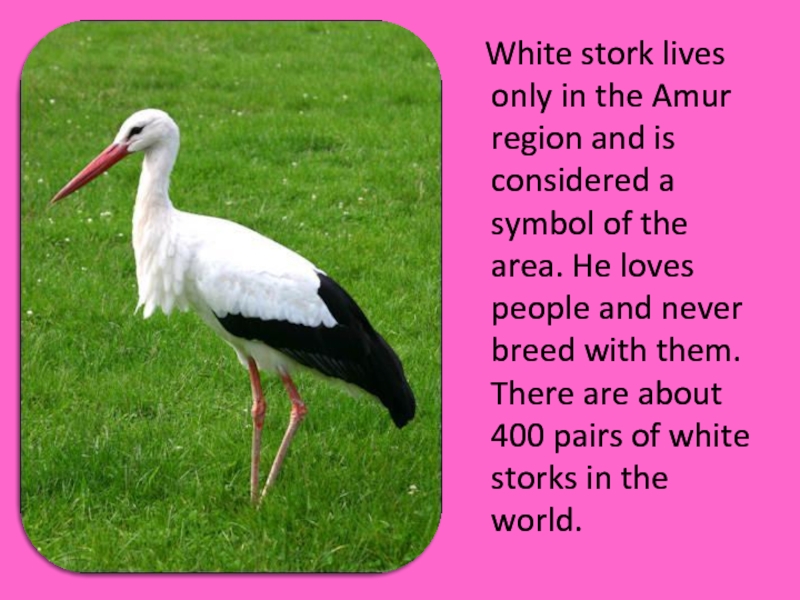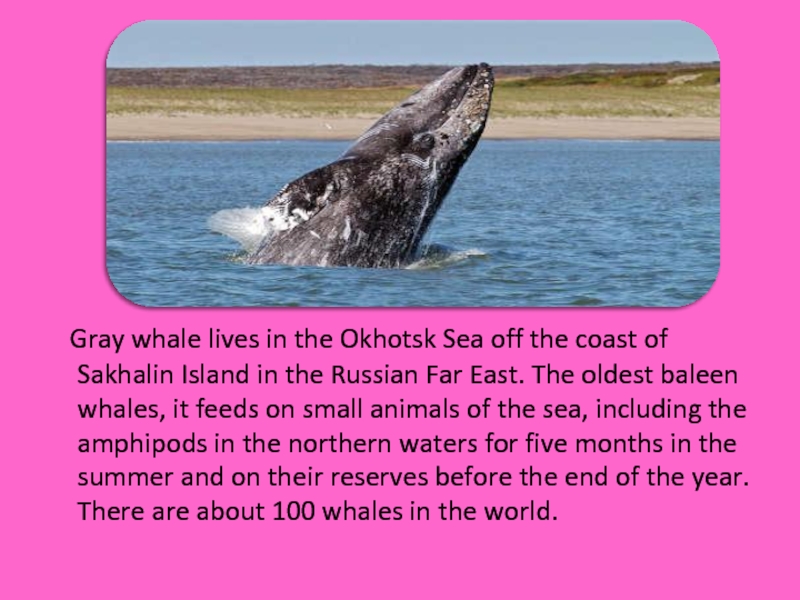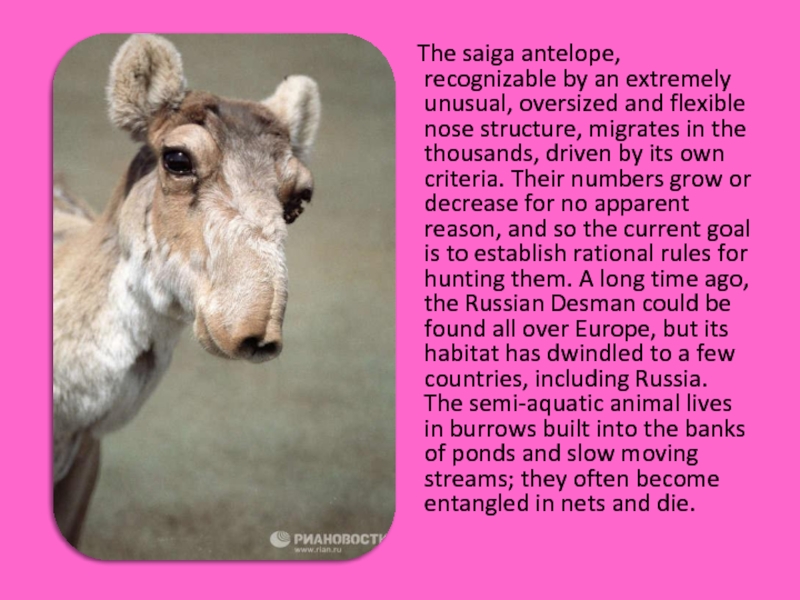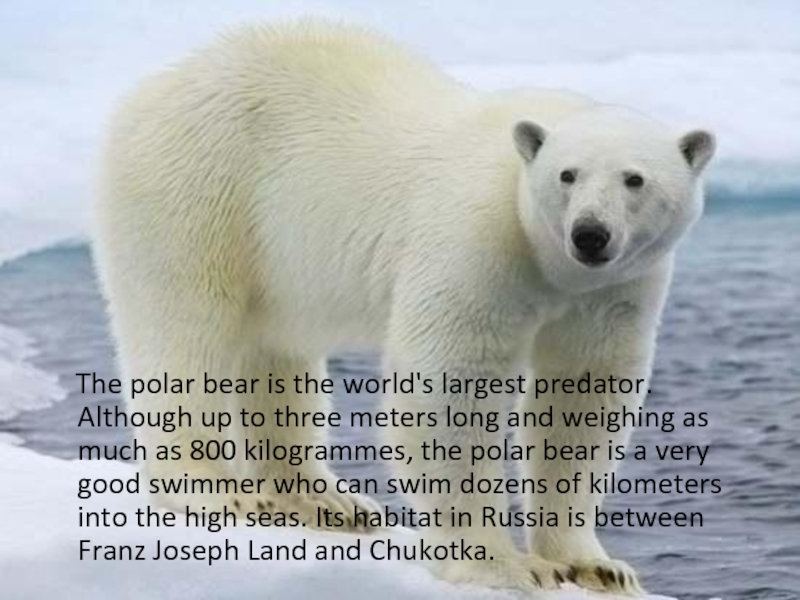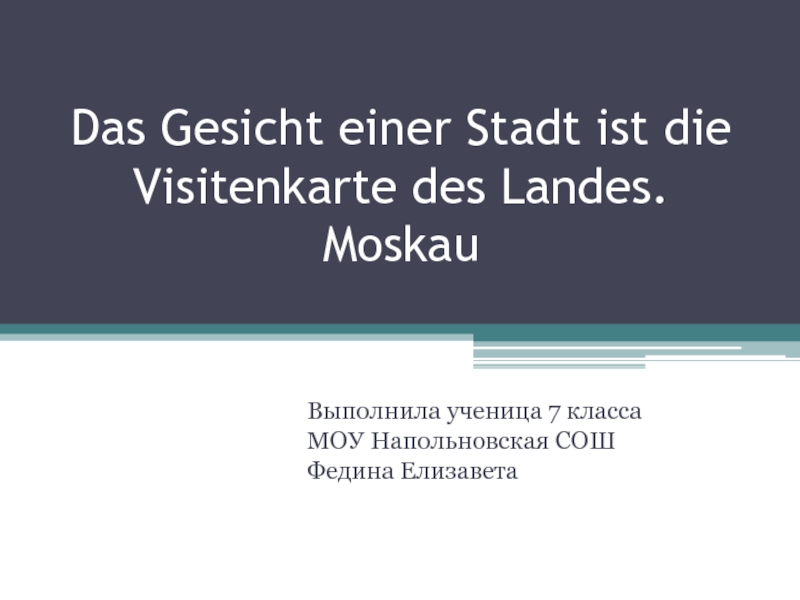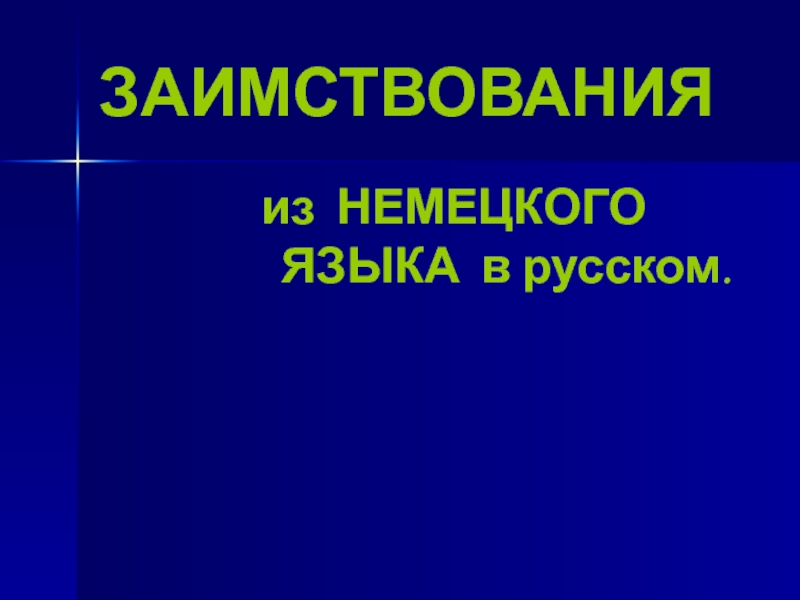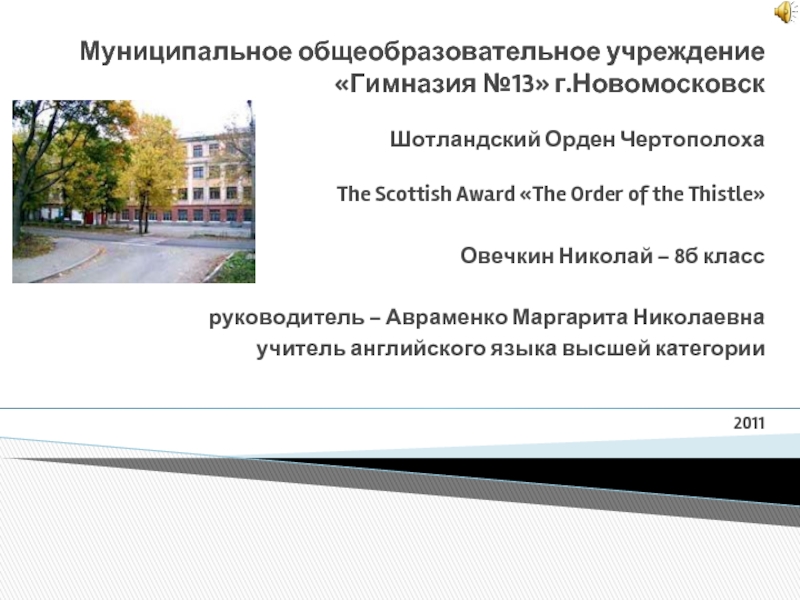Разделы презентаций
- Разное
- Английский язык
- Астрономия
- Алгебра
- Биология
- География
- Геометрия
- Детские презентации
- Информатика
- История
- Литература
- Математика
- Медицина
- Менеджмент
- Музыка
- МХК
- Немецкий язык
- ОБЖ
- Обществознание
- Окружающий мир
- Педагогика
- Русский язык
- Технология
- Физика
- Философия
- Химия
- Шаблоны, картинки для презентаций
- Экология
- Экономика
- Юриспруденция
Treatment of animals in Russia
Содержание
- 1. Treatment of animals in Russia
- 2. In Russia, cruelty to animals is
- 3. It is known that
- 4. March 27-29, 2009 the All-Russian protest against
- 5. In Russia, the existence of homeless animals
- 6. In Russia, the shelter for
- 7. Some Russian defenders and guardians of
- 8. Many refer to the dogs as a
- 9. As a result of
- 10. Amur (Siberian) tiger is the
- 11. Amur leopard, also known
- 12. White stork lives only in
- 13. Gray whale lives in the
- 14. The saiga antelope, recognizable by
- 15. The polar bear is the
- 16. Слайд 16
- 17. Скачать презентанцию
In Russia, cruelty to animals is recognized offenses, Article 245 of the Penal Code, in that case, if it led to their death or injury to the condition "if the
Слайды и текст этой презентации
Слайд 3 It is known that over 60% of
future serial killers in childhood showed a specific cruelty to
animals. 75% of those accused of crimes of violence against the person, a child abused animals. Over 85% of adolescents who have committed serious crimes against the person, previously attracted attention cruelty to animals.According to research by Soviet sociologists, need for repetition of cruelty back nearly 75% of those surveyed who had already seen it, which may indicate the existence of such a tendency. To meet and cover for their addiction, these people usually seek to ensure a legitimate and plausible excuse, choosing a job where cruelty to animals is not classified as a violation, such as the fight against rabies.
Слайд 4March 27-29, 2009 the All-Russian protest against the murder and
cruelty to stray animals. The campaign rallies and demonstrations were
held in more than 40 cities of Russia. Participants of the rally demanded a legislative ban hunting as a method to control the number of stray animals, as well as the adoption of the law on the protection of animals from abuse.Слайд 5In Russia, the existence of homeless animals maintained a tradition
prevalent among the population to feed them, colonize in doorways
or in the yards of flats. Their capture and destruction is a direct rejection and resistance from the population, in particular fans of homeless animals that are their guardians.Слайд 6 In Russia, the shelter for homeless animals fall
mainly animals caught in the streets.
According to Alexei
Voistinova, dog training school principal growth from Vladivostok, street packs of dogs are dangerous to people because of the fact that leaders of these schools are Shepherds, Rottweilers, and representatives of other invasive species, discarded by their owners on the street.Слайд 7
Some Russian defenders and guardians of homeless animals find
that trapping and subsequent euthanasia of abandoned dogs - a
method inhumane, immoral and therefore invalid, because, in their view, all living organisms have a right to life. Solution to the problem they see in the program of sterilization of homeless females and their subsequent return to their former places of residence, the construction of shelters for the state budget, the introduction of strict laws for those who abuse animals.Слайд 8Many refer to the dogs as a favorite toy, or
as to the children, and thus neglect of training necessary
to ensure the safety of the animal and others. The animals are walking in space populous cities without the necessary lead, and often does produce on the street unattended, leaving those can run away and get lost.Слайд 9 As a result of various reasons, some
species are under threat of extinction. These reasons include biotic
factors (caused by the animals, for example, the mode of reproduction of living organisms, the interaction of predators and prey), abiotic factors. In a separate group attributed the causes associated with human activity.Dozens of species of plants and animals become extinct every day. One way is to protect the biodiversity of rare and endangered species of plants and animals.
Слайд 10 Amur (Siberian) tiger is the largest member of
the cat family in the world, and only one, living
in areas of heavy snowfall. There is a little more than 450 Siberian tigers in Russia.Слайд 11 Amur leopard, also known as the Manchurian
leopard, is one of the rarest and most beautiful cats
in the world and the only one living this far north. Human activities have drastically reduced their habitat, making the leopard close to extinction. There are no more than 40 of the cats in the world, 30 in the Primorsky Krai in the Russian Far East.Слайд 12 White stork lives only in the Amur region
and is considered a symbol of the area. He loves
people and never breed with them. There are about 400 pairs of white storks in the world.Слайд 13 Gray whale lives in the Okhotsk Sea off
the coast of Sakhalin Island in the Russian Far East.
The oldest baleen whales, it feeds on small animals of the sea, including the amphipods in the northern waters for five months in the summer and on their reserves before the end of the year. There are about 100 whales in the world.Слайд 14 The saiga antelope, recognizable by an extremely unusual,
oversized and flexible nose structure, migrates in the thousands, driven
by its own criteria. Their numbers grow or decrease for no apparent reason, and so the current goal is to establish rational rules for hunting them. A long time ago, the Russian Desman could be found all over Europe, but its habitat has dwindled to a few countries, including Russia. The semi-aquatic animal lives in burrows built into the banks of ponds and slow moving streams; they often become entangled in nets and die.Слайд 15 The polar bear is the world's largest predator.
Although up to three meters long and weighing as much
as 800 kilogrammes, the polar bear is a very good swimmer who can swim dozens of kilometers into the high seas. Its habitat in Russia is between Franz Joseph Land and Chukotka.
Теги
